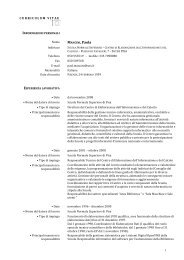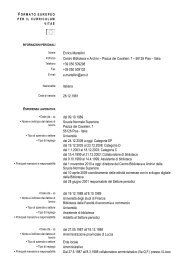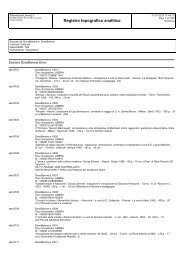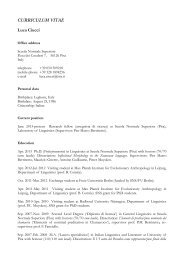Metrics of curves in shape optimization and analysis - Andrea Carlo ...
Metrics of curves in shape optimization and analysis - Andrea Carlo ...
Metrics of curves in shape optimization and analysis - Andrea Carlo ...
Create successful ePaper yourself
Turn your PDF publications into a flip-book with our unique Google optimized e-Paper software.
<strong>of</strong> a small ball from A. The motion v At <strong>in</strong>side N c is Lipschitz, but the limitlimt→0+v At − v A‖v At − v A ‖ L pdoes not exist <strong>in</strong> L p . (Morally, if p = 1, the limit would be the measure δ x ).6.3.3 Riemannian metricLet now p = 2. The set N c may fail to be a smooth submanifold <strong>of</strong> L 2 ; yetwe will, as much as possible, pretend that it is, <strong>in</strong> order to <strong>in</strong>duce a sort <strong>of</strong>“Riemannian metric” on N c from the st<strong>and</strong>ard L 2 metric.Def<strong>in</strong>ition 6.20 We def<strong>in</strong>e the “Riemannian metric” on N c simply by〈h, k〉 := 〈h, k〉 L 2for h, k ∈ T v N c <strong>and</strong> correspond<strong>in</strong>gly a norm bywhere T v N c is the cont<strong>in</strong>gent cone.|h| := √ 〈h, h〉Proposition 6.21 The distance <strong>in</strong>duced by this “Riemannian metric” co<strong>in</strong>cideswith the geodesically <strong>in</strong>duce distance d g .The pro<strong>of</strong> is <strong>in</strong> 3.22 <strong>in</strong> Duci <strong>and</strong> Mennucci [15].To conclude, we propose an explicit computation <strong>of</strong> the Riemannian Metricfor the case <strong>of</strong> compact sets <strong>in</strong> the plane with smooth boundaries; we then pullback the metric to obta<strong>in</strong> a metric <strong>of</strong> closed embedded planar <strong>curves</strong>. We startwith the case <strong>of</strong> convex sets.We fix p = 2, N = 2.6.3.4 Polar coord<strong>in</strong>ates <strong>of</strong> smooth convex setsLet Ω ⊂ lR 2 be a convex set with smooth boundary; let y(θ) : [0, L] → ∂Ω bea parameterization <strong>of</strong> the boundary (by arc parameter), ν(θ) the unit vectornormal to ∂Ω <strong>and</strong> po<strong>in</strong>t<strong>in</strong>g external to Ω. The follow<strong>in</strong>g “polar” change <strong>of</strong>coord<strong>in</strong>ates ψ holds:ψ : lR + × [0, L] → lR \ Ω , ψ(ρ, θ) = y(θ) + ρν(θ) (6.3)see figure 8 on the follow<strong>in</strong>g page. We suppose that y(θ) moves on ∂Ω <strong>in</strong>anticlockwise direction; so ν = J∂ s y, ∂ ss y = −κν; where J is the rotation matrix(<strong>of</strong> angle −π/2), κ is the curvature, <strong>and</strong> ∂ s y is the tangent vector.We can then express a generic <strong>in</strong>tegral through this change <strong>of</strong> coord<strong>in</strong>ates as∫∫f(x) dx = f(ψ(ρ, s))|1 + ρκ(s)| dρ dslR 2 \Ω∫lR + ∂Ωwhere s is arc parameter, <strong>and</strong> ds is <strong>in</strong>tegration <strong>in</strong> arc parameter.48




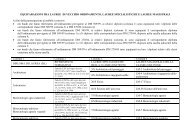
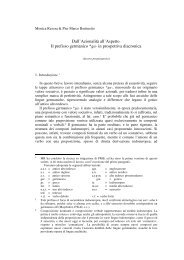
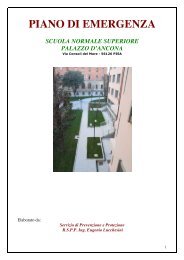
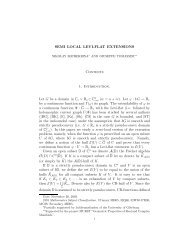
![4. Ghost [Å] vowels in French - Laboratorio di Linguistica](https://img.yumpu.com/49999334/1/184x260/4-ghost-a-vowels-in-french-laboratorio-di-linguistica.jpg?quality=85)



